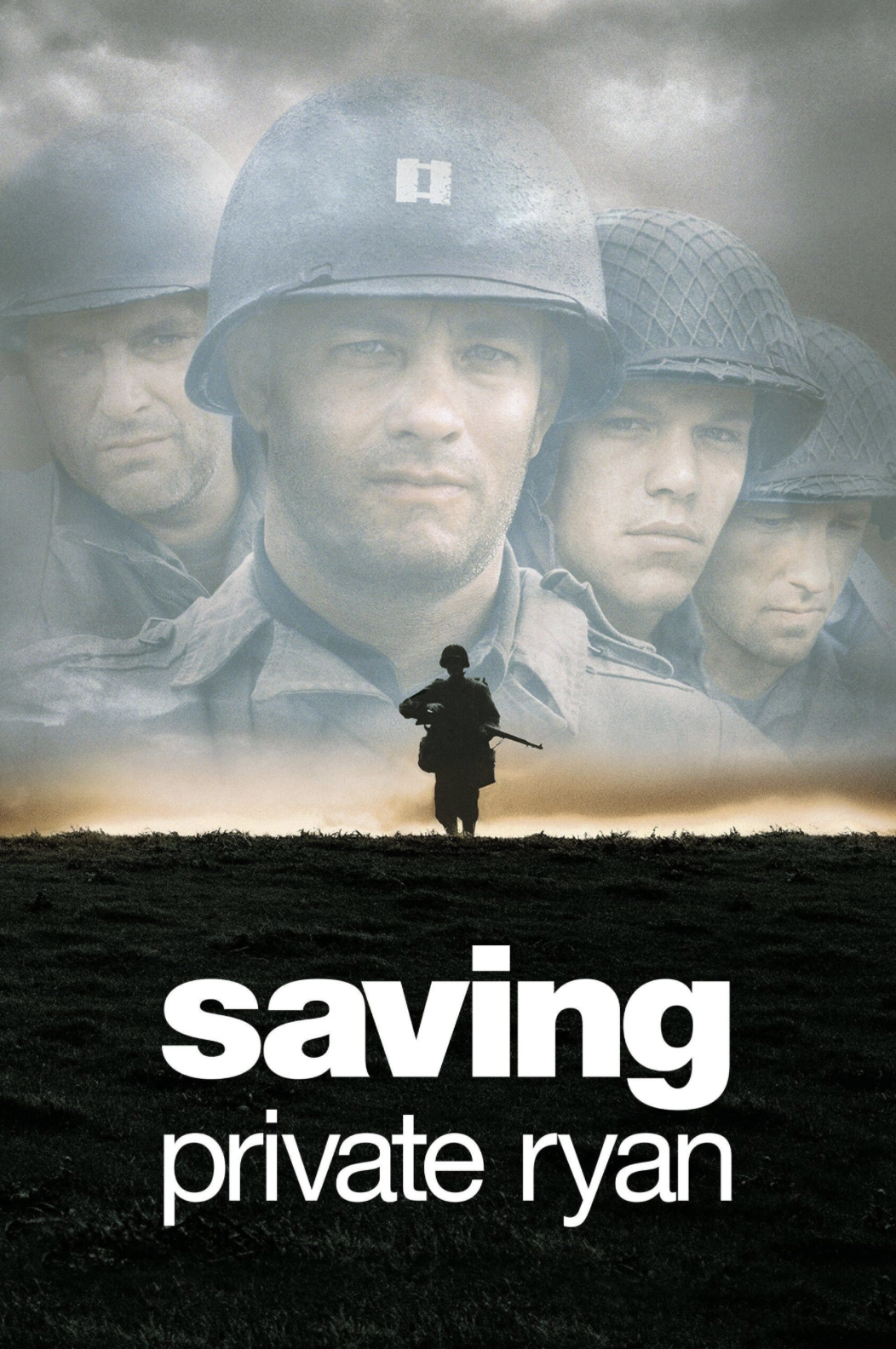"Saving Private Ryan" (Spielberg et al. 1998) may come off as a war movie focused only on fighting and explosions. Praised for its realistic portrayal of war and the gruesomeness with which the movie proceeds, it's easy to see why war-movie fanatics would love this movie. However, beneath its gruesome qualities and horrific effects, the movie subtly delves into the effects of war on veterans, specifically that of Post Traumatic Stress Disorder (PTSD).
Through the eyes of our main character, Captain John Miller (Tom Hanks), we follow the journey of seven men in World War II. These men, tasked with the job of bringing back Private Ryan, a man whose three brothers died in the war, undergo a series of challenges as they attempt to sneak through enemy lines to find Ryan. Dealing with loss and constant warfare along the way, our main characters experience the true brutality of war while continuing along their pursuits in the cold terrain of Germany.
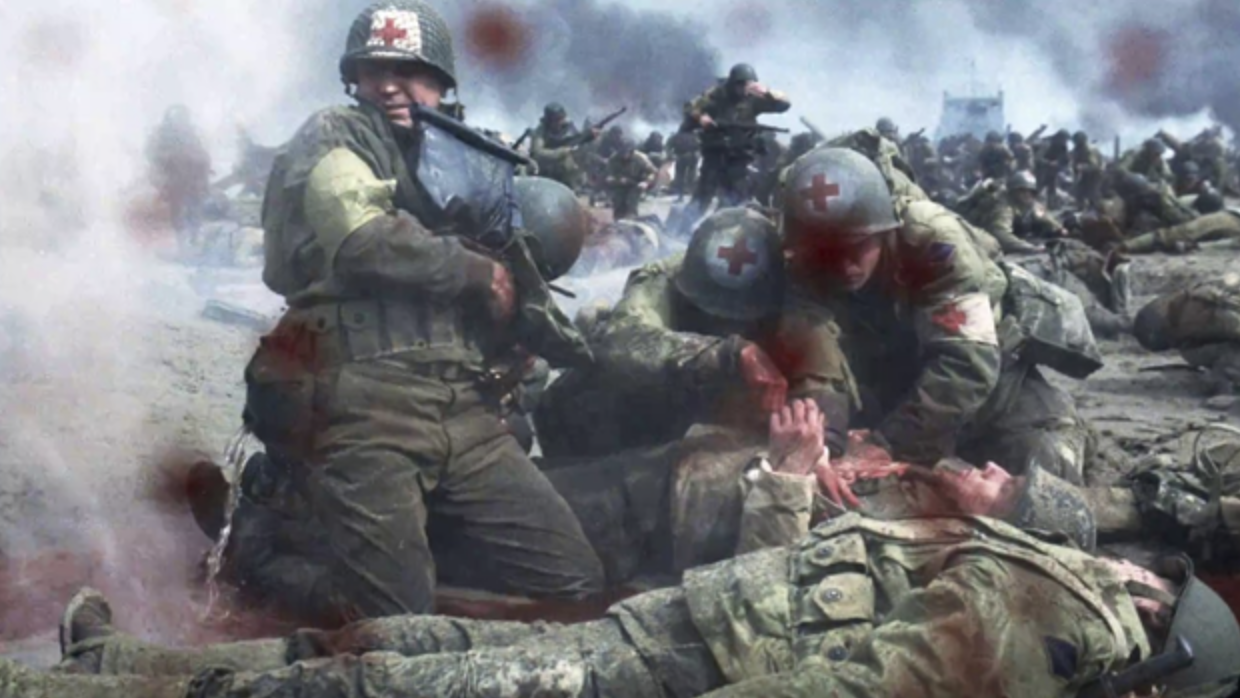
Understanding PTSD: The Invisible Wounds of War
PTSD is a trauma and stressor-related disorder, as classified by the DSM-5, which is triggered by a traumatic event(s) (the stressor). This traumatic event(s) is a recurring disruptive thought in the victim's brain, often prompting symptoms such as flashbacks and other physiological reactions that often occur as a response to fear of events such as the traumatic event recurring. Furthermore, individuals with PTSD experience negative alterations in cognition and changes in their arousal and reactivity, such as failing to remember aspects of the traumatic event or disruption in sleep patterns, respectively.
Key PTSD Symptoms in Veterans
-
Intrusive MemoriesUnwanted, distressing memories of the traumatic event, flashbacks that make the person feel as if they're reliving the trauma.
-
AvoidanceActively avoiding people, places, activities, objects and situations that bring on distressing memories.
-
Negative Alterations in Mood and CognitionPersistent negative thoughts, distorted blame of self or others, negative mood, decreased interest in activities.
-
Alterations in Arousal and ReactivityBeing easily startled, hypervigilance, irritable behavior, problems with concentration and sleep.
PTSD, however, is a relatively common mental disorder, as around 6.8% of the United States population experiences PTSD in some form throughout their lifetime (Kessler, Berglund, Demler, et al. 2005). This number is higher in the military, as a larger proportion of military personnel experience traumatic events. For example, studies have estimated that for veterans deployed to Iraq, the rate of PTSD prevalence is 12.9% (Hines et al. 2014). The same study also found that the rates of PTSD for veterans deployed to Afghanistan were 7.1%. Although the high rate of PTSD amongst veterans is alarming, PTSD has barely been discussed throughout history, often not being taken seriously or glossed over.
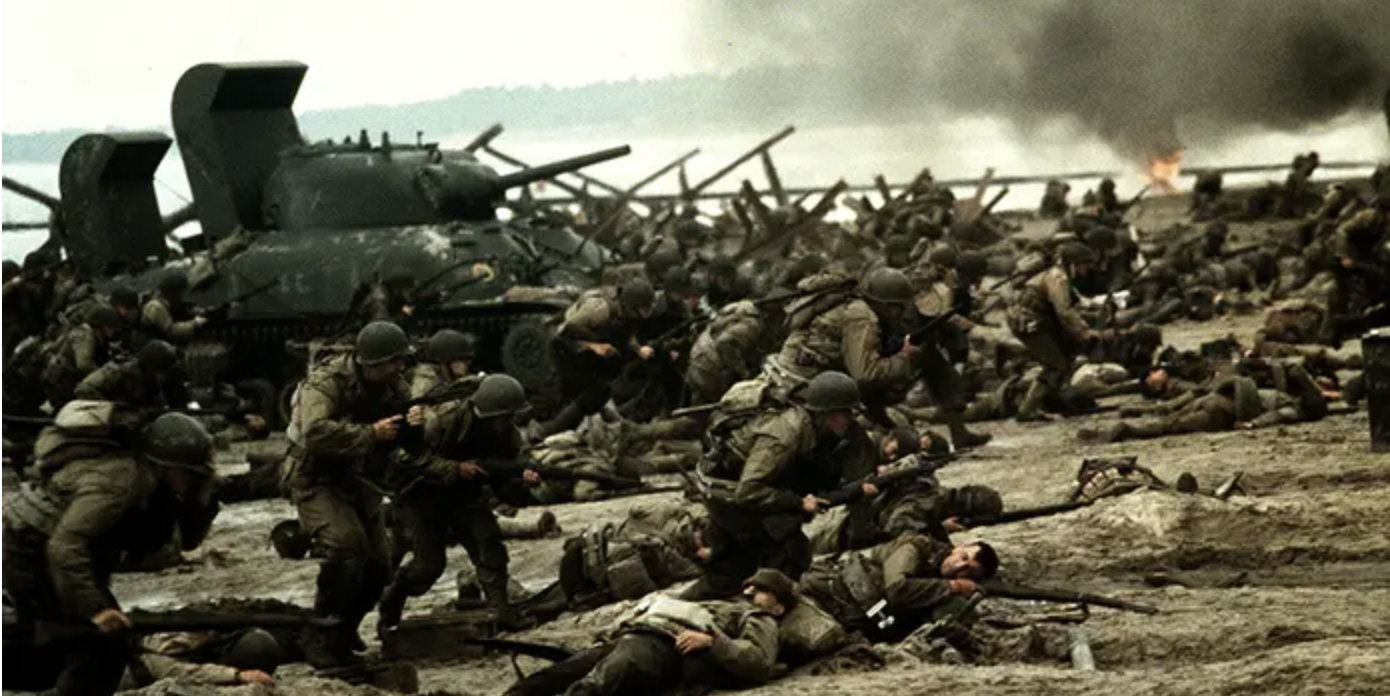
The Historical Context of Combat Trauma
It wasn't until 1980 that the phrase "Post-Traumatic Stress Disorder" was even acknowledged as a valid mental disorder. Prior to that, terms such as "combat fatigue" (which by the way was also noted down as the single largest loss of manpower during World War II were used to describe the illness. Similar to many other mental disorders at the time, PTSD was heavily stigmatized. It was a topic that never truly got any public attention or found its way into the mass media, all while continuing to affect a large portion of the United States population.
"The greatest casualty is being forgotten." - This powerful quote reminds us that the psychological wounds of war often remain invisible and untreated long after the physical battles have ended.
Saving Private Ryan's Portrayal of PTSD
The portrayal of PTSD in "Saving Private Ryan" occurs mainly through the film's protagonist, Captain John Miller. Miller, a seasoned war veteran who is the leader of the mission to rescue Private Ryan, has a left hand that constantly shakes. The shaking of his hands is constantly highlighted throughout the film. Furthermore, during the final battle, we see Miller freeze amongst the chaos as the film slowly moves into a slow-shutter effect that mirrors what Miller sees.
Miller's PTSD Manifestations
The freezing when encountering scenarios similar to a traumatic event and constant shaking of hands are both frequent symptoms of PTSD. While subtle, it is clear that Spielberg, who suffers from PTSD himself, wanted to capture the plight of those with the disorder. Miller is by all means a knowledgeable captain. He is well-versed in strategies and has the necessary experience to carry out a mission as difficult as this, yet he still freezes in crucial moments due to the symptoms of PTSD triggering. Through Miller's inability to function, Speilberg highlights that even the most experienced of war veterans can be affected by PTSD, causing them great difficulties out in the battlefield.
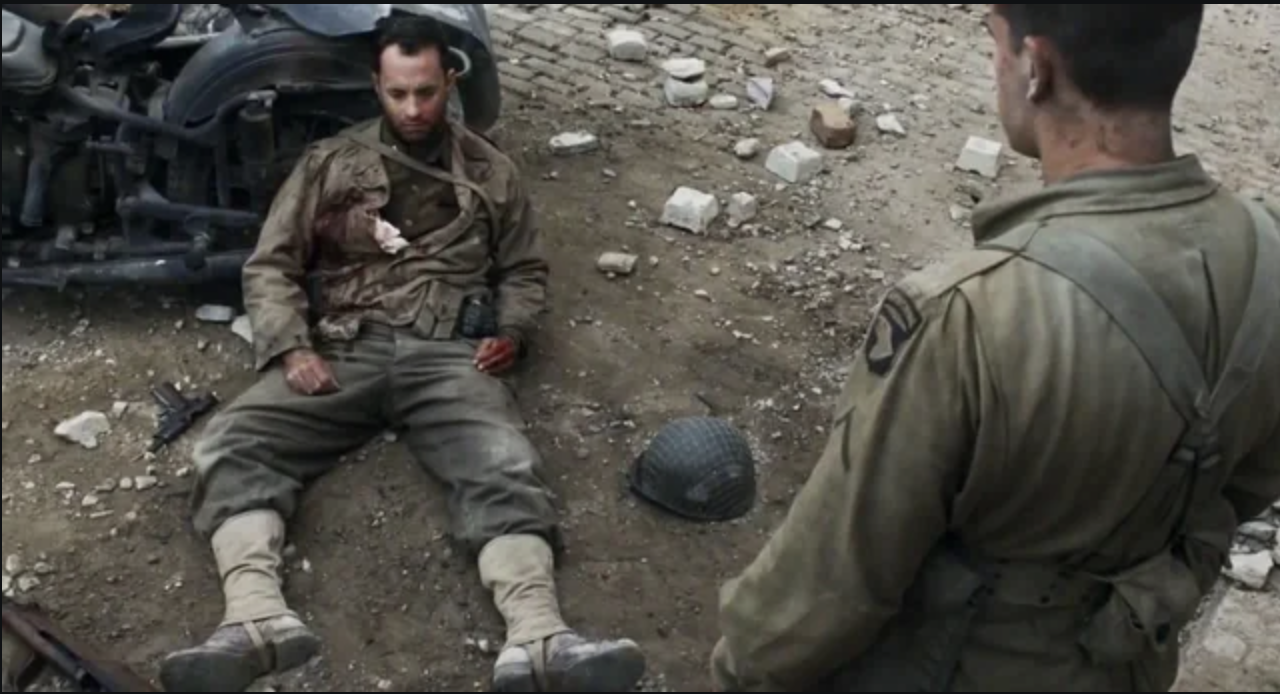
The Symbolism of Miller's Teaching Background
Throughout the film, we learn that Captain Miller was a schoolteacher before the war—a profession associated with nurturing, education, and civilian normalcy. This backstory serves as a powerful contrast to his current role as a soldier, emphasizing how war transforms individuals. The revelation of his civilian identity humanizes Miller and underscores the psychological toll of being forced into a role that contradicts one's fundamental nature.
Miller's reluctance to reveal his pre-war identity also reflects a common PTSD symptom: the feeling of being disconnected from one's former self. Many veterans struggle with identity fragmentation, feeling like they can never return to who they were before their traumatic experiences.
How Saving Private Ryan Created Awareness
"Saving Private Ryan," released in 1998, was one of the first movies to create conversation about PTSD and its effects. The movies' notoriously gruesome depictions of war, especially in their 17-minute beginning sequence portraying the D-Day invasion, showed just how horrifying war is. These scenes were so brutal that veterans around the country had to walk out of the movie as their PTSD was often triggered. This occurrence, which was incredibly rare, sparked national interest. News sources across the country began to follow these reports, bringing attention to the actions of veterans.
However, as more and more news outlets began covering these occurrences, it became clear that there was an underlying issue that caused veterans across the country to leave their seats in horror. Thus, PTSD began to be less stigmatized as open conversations about the disorder finally began to take place. The plight of veterans after war began to be more and more understood as the movie continued to skyrocket into box office success.
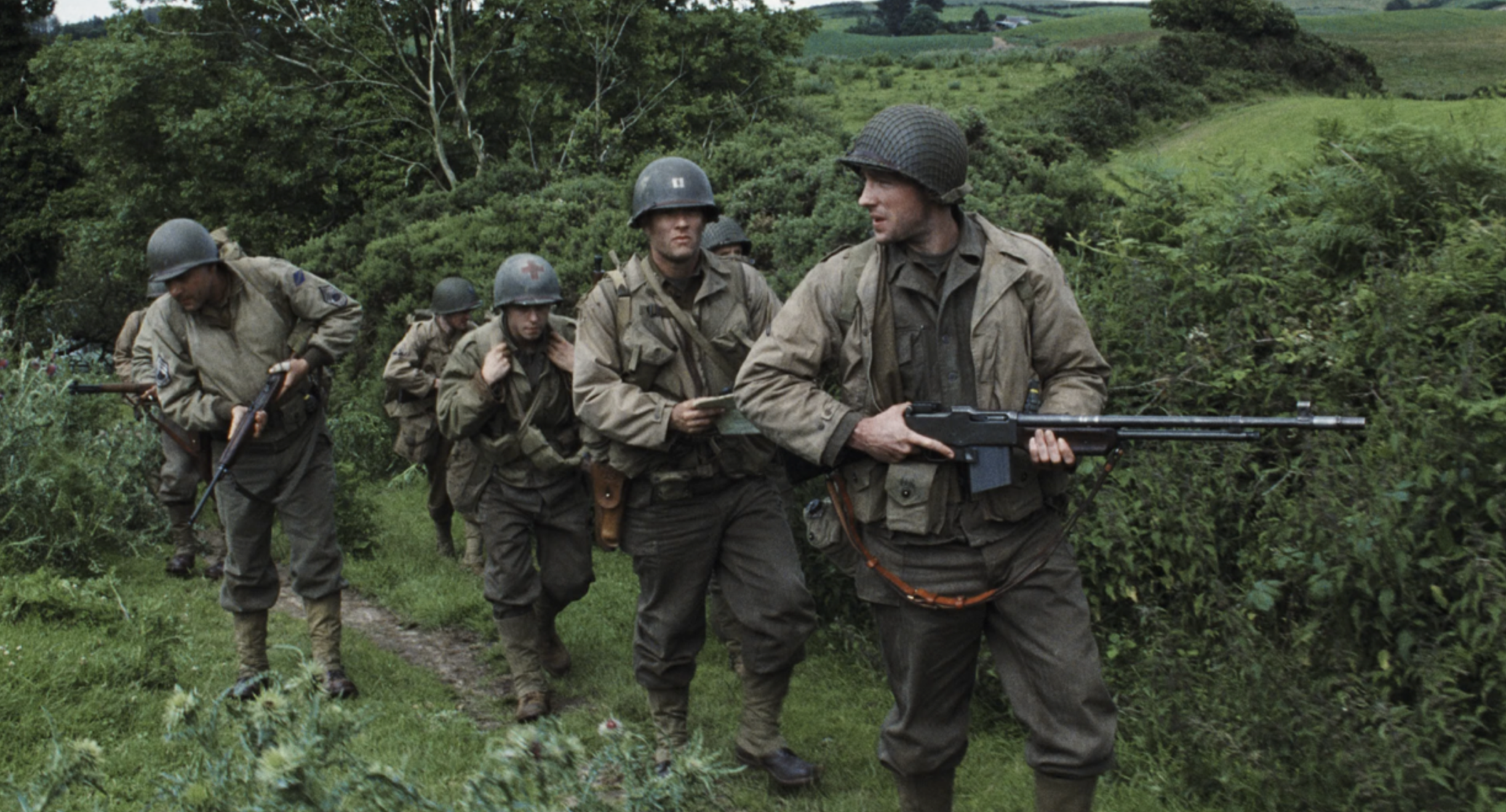
The Ripple Effect in Mental Health Awareness
The film's impact extended beyond just raising awareness about PTSD. It opened discussions about:
- Survivor's Guilt: The psychological burden felt by those who survive when others don't
- Moral Injury: The damage done to one's conscience or moral compass by witnessing or participating in acts that violate personal moral beliefs
- Secondary Trauma: How family members and loved ones are also affected by a veteran's PTSD
- The Importance of Brotherhood: How unit cohesion and camaraderie can serve as both protective factors and sources of additional grief
The Psychological Accuracy of the Film
Mental health professionals have praised Saving Private Ryan for its realistic portrayal of combat stress reactions. The film accurately depicts several key aspects of trauma response:
Clinical Accuracy in the Film
Delayed Onset: Miller's symptoms worsen as the mission progresses, reflecting how PTSD can develop gradually rather than immediately after trauma.
Functional Impairment: Despite his competence, Miller's symptoms interfere with his ability to perform at crucial moments.
Comorbidity: The film shows how PTSD often occurs alongside other conditions like depression and anxiety.
The Power of Cinematography in Depicting Trauma
Spielberg's use of cinematographic techniques to represent Miller's psychological state is masterful. The handheld camera work during battle scenes creates a sense of disorientation and chaos that mirrors the confusion experienced during dissociative episodes. The muffled audio effects when Miller becomes overwhelmed represent how trauma can literally change one's perception of reality.
The famous scene where Miller's hand shakes while trying to light a cigarette is filmed in close-up, forcing the audience to confront the physical manifestation of psychological trauma. This intimate portrayal helps viewers understand that PTSD is not a sign of weakness but a natural response to unnatural circumstances.
Modern Implications and Treatment
Today, we have a much better understanding of PTSD and various treatment options available for veterans. These include:
- Cognitive Behavioral Therapy (CBT): Helps individuals identify and change negative thought patterns
- EMDR (Eye Movement Desensitization and Reprocessing): Helps process traumatic memories
- Exposure Therapy: Gradually exposes individuals to trauma-related stimuli in a safe environment
- Medication: Antidepressants and anti-anxiety medications can help manage symptoms
- Group Therapy: Provides peer support and shared understanding
Conclusion: The Lasting Impact
While the movie is quite often critiqued for its excessive violence, it's important to understand that it is this very violence that made the true horror of war understandable to a larger audience. The bloody nature of the film makes it easier for people to understand why war can be so traumatizing and why PTSD is so common amongst war veterans.
Especially since so many activities we regularly partake in, like fireworks or watching war movies can be so triggering to veterans, it is important to be careful around those you know may have PTSD. PTSD prevails today and we must take the steps to bring more awareness to mental illness. Have you or anyone you know been affected by PTSD? Let us know in our Instagram comments (@filmpsychologee) and we'll see you in our next blog!
References
- Kessler, R. C., Berglund, P., Demler, O., Jin, R., Merikangas, K. R., & Walters, E. E. (2005). Lifetime prevalence and age-of-onset distributions of DSM-IV disorders in the National Comorbidity Survey Replication. Archives of General Psychiatry, 62(6), 593-602. Retrieved from https://pubmed.ncbi.nlm.nih.gov/15939837/
- Hines, L. A., Goodwin, L., Jones, M., Hull, L., Wessely, S., Fear, N. T., & Rona, R. J. (2014). Factors affecting help seeking for mental health problems after deployment to Iraq and Afghanistan. Psychiatric Services, 65(1), 98-105. Retrieved from https://pubmed.ncbi.nlm.nih.gov/25569079/
